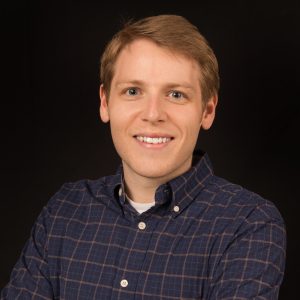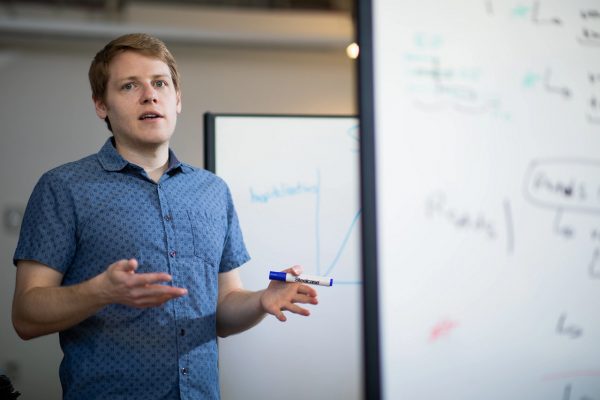Fairness First blog
Researchers voices in health equity
The Fairness First blog represents a space where researchers share with the broader community why health equity research matters to them, how do they connect to health equity, and what is the value of community engagement in the research process.
May 10, 2022
Wildlife and human disease systems:
Discovering how they connect with climate and health equity with Joseph Mihaljevic
Associate Professor, Department of Biological Sciences

Joseph Mihaljevic is originally from Chicago, Illinois, and went to Washington University in St. Louis for this undergraduate degree. After, he started his doctoral studies at University of Colorado in Boulder, where he developed skills in fieldwork, epidemiology, statistics, modeling, and wildlife disease. Mihaljevic was a postdoctoral researcher at the University of Chicago working with collaborators in the US Forest Service to understand and improve the use of a viral biopesticide to combat a forest pest insect. This involved advancing skills in disease modeling and statistics.
At the same time, he also did research to understand co-occurrence patterns of human papillomaviruses. In 2018, Mihaljevic started as an assistant professor in the Northern Arizona University School of Informatics, Computing and Cyber Systems.
His current research spans wildlife and human disease systems, where he uses data and math to better understand and predict the spread of infectious disease. He is particularly interested in how climate is connected to wildlife and zoonotic diseases (i.e., diseases that spill over from wildlife to humans, like West Nile virus), and how differences among populations lead to differences in the numbers and severity of disease cases.
Q. How would you describe your research and why it matters?
A. My research for SHERC is looking at spatial health disparities* in West Nile virus (WNV) infection across Maricopa County, Arizona. WNV is a pathogen, or a microorganism that causes disease, that is mostly carried in bird populations but is spread via mosquitoes. Sometimes infected mosquitoes feed on a human, which can cause a WNV infection. Although most WNV infections in humans are mild or even go unnoticed, some of these infections can cause severe disease, leading to long hospital stays, and sometimes death. Maricopa County is quite interesting because there are annual WNV outbreaks in the summer, which we don’t see in many other parts of the USA. In fact, every year, Maricopa County ranks in the top ten USA counties in the number of human cases of WNV.
In our research, we are trying to build models that predict how the local climate affects the abundance of mosquitoes and the spread of WNV. The long-term goal is to build models that could be used for public awareness, warning folks in specific zip codes or neighborhoods that the risk of WNV might be high in the coming days. We also hope that such a modeling system could serve as an example for other regions.
*Health disparities are differences in disease and opportunities for health between populations that come from broader social inequities. Spatial health disparities are related to specific areas or locations, such as neighborhoods or zip codes.
Q. Tell us about a moment in your life when you decided, “This is the type of research I want to do!”
A. My research interests are always evolving, and I try to study aspects of our natural world that have meaningful impact. When I was an undergraduate, I was doing summer research on amphibians, but I got to work with a Postdoc who was studying tick-borne diseases. He was going out to the forest and collecting ticks, testing them for pathogens that could infect humans.
I realized that I wanted to work on problems that combine how humans influence the natural world and how nature impacts humans, through the spread of disease. In addition to enjoying the outdoors, I’ve always been interested in math and computers. Using math and computers to build models to understand infectious disease, and the connection between climate, disease, and human public health, really allows me to go after several of my overlapping interests.

Q. What is the element of “unfairness” or “inequity” in the issue you are examining (in the broad context of health and wellbeing)?
A. Part of our West Nile virus research, in close collaboration with Dr. Crystal Hepp, is to actually measure what aspects of the natural and human-built environment lead to higher or lower risk of West Nile virus infection in humans. To answer this question, we must understand in which areas of Maricopa County there are more infectious mosquitoes, more infectious birds, and more favorable climate for spread. We also need to understand the social determinants of health* that might lead to higher exposure risk for humans. So, finding this out is a main focus of our research.
*The social determinants of health are the conditions in which people are born, live, work, play, and age that affect individual and community health. For example, education and job opportunities; access to quality affordable healthcare, housing, transportation, and food; neighborhood safety, and social connection.
Q. How do you see your work helping to push the needle on this issue towards “fairness” or “equity”?
A. Part of our work, in the long run, seeks to get critical information in the hands of people at highest risk: where and when is there high risk of West Nile infection, and how can you protect yourself. Part of health disparities is unequal access to information and training. We hope to create computer systems and tools that can help public health practitioners communicate with people on the ground using data-driven information.
Q. How do you want your research to make a difference or change in this world?
A. Sometimes West Nile virus is not seen as a major problem, because it doesn’t cause as many severe illnesses or deaths as some other pathogens (e.g., SARS-CoV-2 which causes COVID-19). However, for the individuals that experience WNV disease, the problem is very real and has serious effects on their lives. I hope that our modeling work can eventually help warn people ahead of time, help create more awareness of the disease, and assist public health practitioners in understanding why WNV spread might be high or low in certain neighborhoods.
Q. What is one important lesson you’ve learned about yourself and this region through your research?
A. Before I started collaborating with Dr. Crystal Hepp on this West Nile virus research, and before COVID-19, I wasn’t well-connected with the public health community in our state. This research has shown me how difficult and important is the work of our public health partners, and how valuable our partnerships are.
People across the state are working so hard to inform the people of Arizona about the many infectious disease threats that are out there, and they are trying hard to find creative solutions. I really respect and value my collaborators in public health, and I appreciate having the privilege to research topics that have impact on the lives of folks here in this state.
You can connect with Dr. Joseph Mihaljevic at Joseph.Mihaljevic@nau.edu to learn more about her work and potential collaboration opportunities.
Back to the main Fairness First Campaign page.